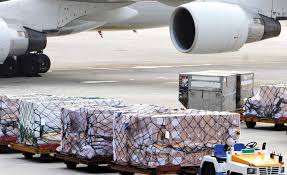Shipping Risk Assessment And Underwriting
- The basis of the contract is the proposal form.
- Premiums must be paid upfront before commencement of cover.
- Premiums form the basis or the consideration for indemnity.
What is Marine Insurance?
Marine Insurance is International in nature. It is a transit risk policy covering movement of cargo from one specific point to the other point of discharge. The risk attaches from the time goods leave the warehouse of the consignor who is named in the policy and continues during the ordinary course of the voyage up to the consignee’s warehouse. The insurance is issued to cover:
- The hull i.e. The vessel itself.
- The cargo i.e. What the vessel is carrying.
- The freight i.e. The sum paid for transporting goods or for the hire of the ship.
- Liability towards third parties
Types of Cover
We have three types which are:
- ICC(A) – This covers all risks of loss of or damage to the subject matter insured.
- ICC(B)
- ICC(C)
Types of Perils
The perils we cover under Marine Insurance are:
- Marine Perils (Perils of Sea) – This may include fire, explosion, jettison, storm, collision, sinking, contact with objects fixed or floating e.t.c.
- War, strike, riot and civil commotion.
- Extraneous Perils – Such as pilferage, non-delivery, rain water damage, hook damage, oil damage, heating, breaking, denting e.t.c.
Full Risk Evaluation Information
- Transport
The full risk evaluation information should review containerization of cargo, sea freight, air freight, rail freight and road freight as necessary in order to guide the underwriter in assessing the marine risks and or seeking implementation of risk improvement and determination of the premium rate applicable.
Underwriting Factors
Before granting cover, it is pertinent to take into consideration the following factors :
- Geographical areas covered;
- Mode of conveyance;
- Nature of goods;
- Age of the vessel;
- The voyage;
- Political factors;
- Physical and / or presence of fog;
- Atmospheric disturbance;
- Safety of port of discharge;
- Packing;
- Transshipment e.t.c.
Terms and conditions apply
Types of Vessels
- Ocean Going Vessels
- War Vessels
- Crude Oil Carriers
- Roll On, Roll Off (RORO)
- Ice Breakers
- Bulk Cargo Carriers
- Coastal or Inland Water Crafts
- Ferries
- Dredgers
- Oil Rigs
- Canoes
- Speed Boat
Types of Marine
- Marine Cargo
- Marine Hull
Marine Insurance Underwriting
The Underwriter has eleven tasks to perform for every new risk proposed for insurance and every existing risk where a change of risk is notified or detected. These tasks are as follows:
- The Overview of Marine Hull and Cargo Assessment:
- The considerations for accepting Hull and Cargo business;
- The information needed from ship owners;
- The rating process for Hull & Cargo risks;
- Explain the types of Marine Hull & Cargo risks;
- Understand the rating considerations taken into account when underwriting Hull & Cargo businesses;
The Overview of Marine Hull and Cargo Assessment.
- Understand the thoughts of Underwriters when rating Hull & Cargo Businesses;
- World Trade, volumes and trading patterns;
- The principal types of vessels and their susceptibility to loss;
- The most commonly found hazardous voyages;
- Risk assessment factors for insuring Hulls & Cargo;
- The factors which determine the Hull & Cargo rate including Type of Vessel; Flag; Classification; Ownership and Management and the type of insurance cover;
- Hull & Cargo Trading conditions and the geographical location problems they may present;
Overview of Marine Hull and Cargo Assessment.
- The effect of different types of ship finance arrangements;
- Variations in ship valuation and the implications for premium rating;
- The risk assessment factors for Hull & Cargo War & Strikes Insurance;
- The risk assessment factors for Hulls & Cargo Port Risks and Builders’ Risks;
- Loss prevention and Risk Management – the methods used and their importance;
- The importance and significance of statistics for Marine Hull & Cargo underwriters.
2 Check the general acceptability of the proposer and risk by establishing:
- Any previous losses by any of the risks proposed for insurance in the last five years
- Any previous insolvency, bankruptcy etc.
- Any previous convictions or pending prosecutions for outstanding charges in respect of Theft, Fraud or similar offence.
3. Identify the underwriting factors and estimated maximum loss: which when taken together will define the risk in terms of likelihood of damage by the perils to be insured, the probable extent of the damage and the chances of early detection which will enable steps to be taken to stop the damage and limit the loss.
4. Establish the type of risk and acceptance class which involves using the insurer’s criteria for classifying risks into acceptance classes to allocate the correct acceptance group;
5. Apply the acceptance limit for the class to the estimated likely to arise after taking into account the probabilities established in task 3;
6. Utilize such automatic reinsurance as are available if the result of step 5 is to produce an acceptance of less than;
7. Identify the premium/rating factors for the risk;
8. Calculate terms;
9. Make an offer to the proposer or introducing intermediary i.e. quote or introduce a broker;
10. Make a list of all the factors which increase the risk with a comment against each on whether it can be reduced or eliminated;
11. Review the case to ascertain.
Presentation of Risks for Underwriting
- Risk(s) may be presented in insurance for underwriting by Insurance Brokers, Proposers, Solicitors, another Insurance Company or Insurance Department of a large Company;
- Depending on the type of risk involved, any presentation made to insurers must include the following information among others, to enable them in determining the general acceptability of the proposer and the risk:
- Name of the Proposer
- Main address of the Proposer
- Occupation of the Proposer
- Type of Risk
- Description of the subject matter of Insurance
- Sum Insured.
Information Needed for Risk Presentation
- Upon the receipt of slip presented by broker, underwriters need to prepare a quotation in response, but would need to go through the presentation, jotting down their thought process and aspect they would query such as:
- Is the broker authorized by the proposer?
- Do we know or have any relationship with the proposer?
- Have we quoted or refused to quote for this business before?
- Do we hold any other business for this client?
- Is the occupation acceptable for the range of cover requested?
- Who is the current insurer?
- Size of sum insured – Survey. Is it cost effective?
- Are all the details included that we need to provide a preliminary quotation?
Types of Hazards
- Physical Hazards
- Moral Hazards
- Physical Hazards: These relate to the physical nature of the risk i.e. that describes the subject matter of insurance and it includes the details of any unusual features of the subject matter of insurance.
- Moral Hazards: Include the aspects of the risk that depend on the character and behavior of the insured himself, e.g. criminal acts, previous losses and claims under the policies, any adverse insurance history, details of other policies currently in force.
Further Information on Moral and Physical Hazards
*Further Information on Moral and Physical Hazards
*Information on moral hazards which borders on:
*The ownership of the vessel and their financial standing.
*The management of the vessel, their experience on the trade, their level of competence and their past claim records.
*Information on physical hazards which include:
*The name of vessel
*The vessel’s class
*The age of the vessel
*The flag of the vessel and country of origin
Marine Cargo Insurance
*The term “Marine Cargo Insurance” refers to insurance of cargo and in most cases freight is included in the insurance.
*The insurance on Marine Cargo just like marine hull is usually insured in a manner and to the extent agreed thus, it is a ‘valued policy’. In view of this reasons, average does not apply to such policies.
*A valued policy is defined under Section 27 (2) of the Marine Insurance Act 1906 ‘as a policy specified the agreed value of the subject matter insured’.
Classification of Cargoes
*The goods imported into the country can be classified into the following headings:
*Bulk Cargoes: These include cement, rice, beans, sugar, salt etc.
*Perishable Goods: Vegetables, fruits, pepper, etc.
*Fragile Goods: China, glass, ceramics, etc.
*Electronics Goods: refrigerators, televisions, etc.
*Building Materials: roofing sheets, ceramics etc.
*Pharmaceuticals: hospital drugs, injections etc.
*Industrial Goods: industrial raw materials, finished
*Chemical Gods: benzene, acids, potassium, etc.
*Inflammable Goods: Crude oil, kerosene, soap, etc.
*Textile Goods: cloths, cottons, etc.
*Agricultural Goods: agricultural produce, day old chicks, fruits, etc.
*Paper Goods: sisal, pauper, bond paper, etc.
*Valuable Goods: precious stone, work of art, jewelries, etc.
*Plants and machinery: generators, turbines, lift, motor cars, etc.
*Agricultural implementations: tractors, ploughs, etc.
*Liquid goods: water, mineral water and other liquid substances.
*Dry Cargoes: iron rod, steel, stone.
Documents used to effect Marine Cargo Insurance
The following documents are required in effecting marine cargo insurance:
*Proforma Invoice
*Central Bank Form ‘M’
*Marine Insurance Certificate
*Broking slip where such business is being introduced by an Insurance Broker.
Marine Cargo Insurance Policy
*Section 22 of M.I.A 1906 states that: “a contract of marine insurance is inadmissible in evidence unless it is embodied in a marine policy in accordance with this Act”. The policy may be executed either at the time when the contract is concluded, or afterwards.
*The Act did not define what a marine policy is, neither did it specify what a marine policy looks like. Rather it simply states that any document that is able to meet the requirements of sections 23 and 2 of M.I.A 1906 will for all intents and purpose be referred to as a marine policy
*Section 23 states that:
* A marine policy must specify the name of the assured, or of some person who effects the insurance on his behalf.
*Section 24(1) states that a marine policy must be signed by or on behalf of the insurer.
Types of Marine Cargo Insurance Policies
These include:
*Single transit policy
*Floating policy
*Open slip
*Single Transit Policy: This is also referred to as a one-off cover. The insurance or such shipment is negotiated separately, whereby a Marine Insurance Certificate or a policy is issued for every shipment.
*Floating Policy: This cover entail a situation where the proposer has a large volume of shipment related to the performance of a specific project e.g Contract to constant cement plan, refinery, bridge, roads, etc.
*Floating Policy: The policy will be issued based on the total value of the equipment and materials required to be shipped and the total premium charged but a deposit premium would be paid. As the shipments are delivered, the total summit insured value is reduced until the fund shipment. Thereafter, reconciliation of the total value shipped in relation with the premium is done whereby additional premium would be made once the shipments are concluded the cover ceases.
*Thus, this policy covers all shipments of a particular kind; stating the conditions, premium rate and limit per bottom and one policy document is issued to cover all the declarations.
*Open Cover Policy: The most common cover for Cargo Insurance is the Open Cover. This is very suitable for a medium or large sized business outfit which is involved in importation or export of goods on regular basis.
*This is an agreement between the proposer/merchant/business man with the insurer to accept and cover all shipments within the terms and conditions of the Open Cover contract.
&The agreed terms are as follows:
*The assured’s Name is specified
*The certificate limit
*The bottom limit i.e. total sum that could be in one ship
*The rate chargeable per certificate
*The deductible or excess
*Sometimes named superintendent are agreed.
*The type of vessel to be employed is specified and subject to Nigeria Classification Clause which limits the age of sea vessels allowed to bring cargo to Nigeria to a maximum age of 15years, except where such vessels are liners whereby age limit of 25years is allowed.
*Voyage allowed are state in general terms such as overseas or world-wide to Nigeria then to the insured’s warehouse.
*Interest specified e.g. Building materials, Pharmaceuticals, Electronic goods, Chemical & Industrial raw materials.
*Basis of valuation stated goods valued at cost and Freight (C & F) plus 10%
*Conditions: Institute Standard Conditions for cargo contracts
Marine Cargo Insurance Clauses
- Institute Cargo Clauses (ACC) A
- Institute Cargo Clauses Air cargo
- Institute Cargo War Clauses (Cargo)
- Institute Cargo War Clauses (Air Cargo)
- Institute Cargo Strike Clauses (Cargo)
- Institute Cargo Strike Clauses (Air Cargo)
- Rate: ICC ‘A’ – 0.65%
- ICC ‘C’ – 0.25%
- War & Strike – 0.15%
INTERNATIONAL CONTRACT
*International contract sales are term and conditions of contract between the seller and the buyer and it’s usually embodied in a contract of sale.
The Subject-matter of this Contract is particularly the obligation of the Seller to deliver goods specified in the Exhibit No. 1 hereto to the Buyer and to transfer the property in goods to the Buyer under the terms and conditions herein and the obligation of the Buyer to accept the delivered goods from the Seller and to pay the agreed purchase price.
*Free on Board (F.O.B) : When goods are sold FOB, the seller is only responsible for and has the right in goods until they are loaded on the carrying vessel . The seller is responsible for paying all expenses and arranging transit until the goods are on board .lt is the seller’s right to arrange insurance up to this point .Once the goods are on board ,the buyer takes over all rights and responsility including payment of freight and arranging for insurance .
*Cost & Freight (C & F) : The C & F sale contract is similar to the F.O.B sale contract except that the seller has the responsility of paying the freight whilst the responsility for arranging insurance is that of the consignee .
*Cost, Insurance & Freight (C.I.F) : Under the CIF sale contract ,the seller undertakes to arrange and pay for all the cost of delivery and insurance to destination (warehouse to warehouse) because the buyer has paid for these in the sale price . Under this sale contract ,the consignee has no responsility until the he takes delivery of the goods .
The insurance policy may however be assigned to the consignee(buyer) and he can claim under the policy as though he had arranged the insurance himself
*Free Alongside Ship(FAS) : This sales term requires the seller to place goods alongside the vessel or on the dock designed by the buyer and to the responsible for loss or damage up to that point . The buyer ordinarily places insurance under this term but the seller should protect himself with an F.O.B sales endorsement for the risks prior to the transfer of title
By Adu Gbolahan







